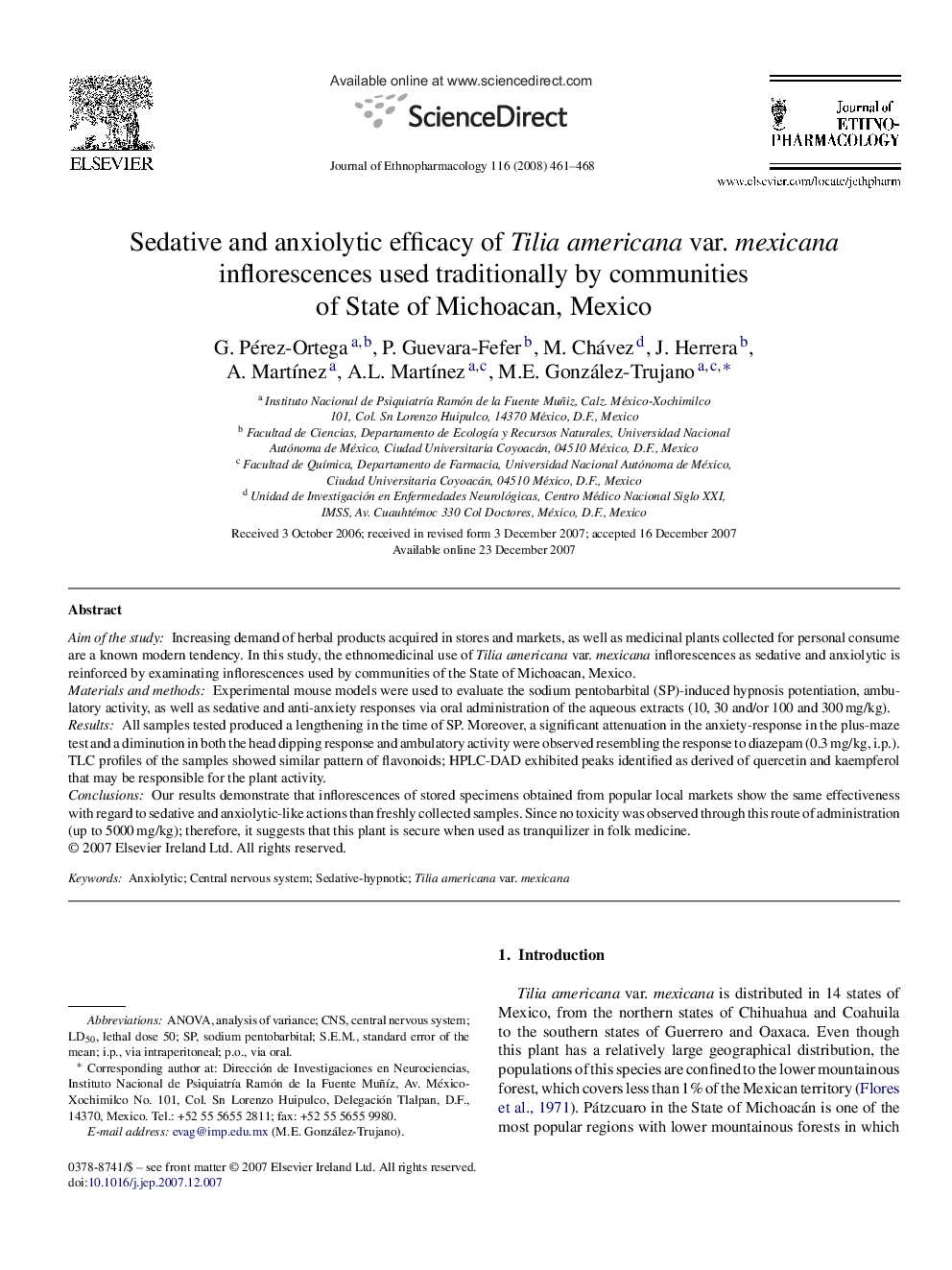| Article ID | Journal | Published Year | Pages | File Type |
|---|---|---|---|---|
| 2547231 | Journal of Ethnopharmacology | 2008 | 8 Pages |
Aim of the studyIncreasing demand of herbal products acquired in stores and markets, as well as medicinal plants collected for personal consume are a known modern tendency. In this study, the ethnomedicinal use of Tilia americana var. mexicana inflorescences as sedative and anxiolytic is reinforced by examinating inflorescences used by communities of the State of Michoacan, Mexico.Materials and methodsExperimental mouse models were used to evaluate the sodium pentobarbital (SP)-induced hypnosis potentiation, ambulatory activity, as well as sedative and anti-anxiety responses via oral administration of the aqueous extracts (10, 30 and/or 100 and 300 mg/kg).ResultsAll samples tested produced a lengthening in the time of SP. Moreover, a significant attenuation in the anxiety-response in the plus-maze test and a diminution in both the head dipping response and ambulatory activity were observed resembling the response to diazepam (0.3 mg/kg, i.p.). TLC profiles of the samples showed similar pattern of flavonoids; HPLC-DAD exhibited peaks identified as derived of quercetin and kaempferol that may be responsible for the plant activity.ConclusionsOur results demonstrate that inflorescences of stored specimens obtained from popular local markets show the same effectiveness with regard to sedative and anxiolytic-like actions than freshly collected samples. Since no toxicity was observed through this route of administration (up to 5000 mg/kg); therefore, it suggests that this plant is secure when used as tranquilizer in folk medicine.
